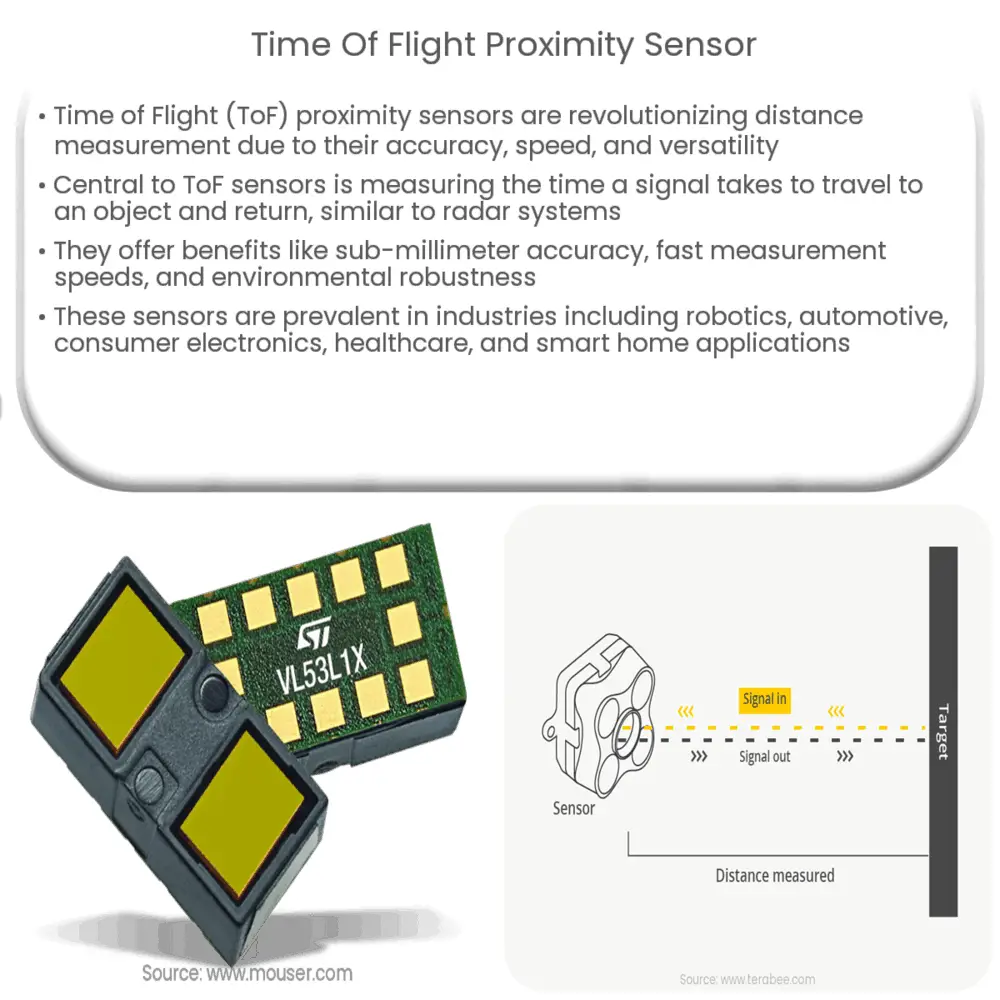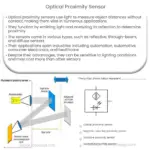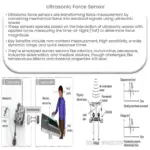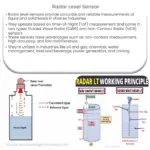ToF proximity sensors provide accurate, fast, and versatile distance measurements, revolutionizing industries like robotics, automotive, and IoT.

Time of Flight Proximity Sensors: The Cutting-Edge Technology Revolutionizing Distance Measurement
Introduction to Time of Flight Proximity Sensors
Time of Flight (ToF) proximity sensors have been gaining significant attention in recent years due to their unparalleled accuracy, speed, and versatility in various applications. These advanced sensors are revolutionizing the way distance measurements are taken in industries such as robotics, automation, automotive, and consumer electronics. This article delves into the principles behind ToF proximity sensors, their advantages, and some common applications where these sensors are making a difference.
Understanding the Basics of Time of Flight Sensors
At the core of ToF proximity sensors is the concept of measuring the time it takes for a signal, typically light or sound, to travel from the sensor to an object and then back to the sensor. By accurately measuring this time, the ToF sensor can calculate the distance to the object with high precision. The principle behind ToF sensors is similar to that of radar or sonar systems, but they often use a modulated light source, such as infrared or laser diodes, to transmit the signal.
There are two primary methods for measuring the time of flight in these sensors: direct and indirect. In the direct method, the sensor measures the time it takes for a single pulse of light to travel to the object and back. In the indirect method, the sensor measures the phase difference between the transmitted and received light signals, which is proportional to the distance to the object. Both methods offer their own advantages and drawbacks, but both are capable of achieving remarkable accuracy in distance measurements.
Advantages of Time of Flight Proximity Sensors
ToF proximity sensors offer several key advantages over traditional distance measurement techniques, such as ultrasonic or infrared sensors. Some of the primary benefits include:
- Accuracy: ToF sensors can achieve sub-millimeter accuracy, making them ideal for applications that demand high precision.
- Speed: These sensors can perform distance measurements at incredibly fast rates, often in the order of microseconds or even nanoseconds, enabling real-time distance measurements in fast-moving applications.
- Robustness: ToF sensors are less susceptible to interference from ambient light, making them more reliable in a variety of environmental conditions.
- Versatility: With the ability to measure distances over a wide range of values, from a few millimeters to several meters, ToF sensors can be employed in numerous applications across various industries.
Common Applications of Time of Flight Proximity Sensors
Thanks to their versatility and high performance, ToF sensors have found use in a multitude of applications, such as:
- Robotics and automation for tasks like object detection, collision avoidance, and navigation
- Automotive industry for advanced driver assistance systems (ADAS) and autonomous driving
- Consumer electronics, including smartphones, tablets, and virtual reality devices for features like facial recognition, gesture control, and autofocus
Industrial and Manufacturing Applications
ToF sensors are increasingly being employed in industrial and manufacturing environments for tasks such as:
- Quality control and inspection, where precise distance measurements are required for detecting defects or verifying product dimensions
- Automated material handling systems, where ToF sensors enable accurate positioning and collision avoidance for equipment like conveyors, cranes, and forklifts
- Warehouse automation, including inventory management and order picking, where ToF sensors can help accurately locate and track items in real-time
Healthcare and Biometrics
In the healthcare sector, ToF sensors are finding applications in areas such as:
- Medical imaging, where ToF technology is used in devices like PET scanners to improve image quality and reduce scan times
- Biometrics and patient monitoring, where ToF sensors can be used for non-contact measurements of vital signs like respiration rate and heart rate
- Assistive devices, where ToF sensors enable accurate distance measurements for the visually impaired or for people with mobility challenges
Smart Home and IoT Devices
As smart homes and IoT devices continue to grow in popularity, ToF sensors are being integrated into these systems for functions like:
- Security and surveillance, where ToF sensors can detect intruders, monitor entryways, and track people or objects within a space
- Energy management, where ToF sensors can be used to control lighting and HVAC systems based on occupancy and user behavior
- Gesture control, where ToF sensors enable intuitive and contactless interaction with smart home devices and appliances
Conclusion
Time of Flight proximity sensors are transforming the way distance measurements are taken across a wide array of applications and industries. With their unparalleled accuracy, speed, and versatility, these cutting-edge sensors are revolutionizing robotics, automation, automotive, consumer electronics, and more. As technology continues to advance and new applications emerge, the impact of ToF sensors will only continue to grow, shaping the future of sensing and distance measurement.




